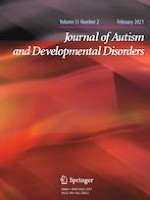Gepubliceerd in:

25-06-2020 | Letter to the Editor
DSM-5 and Challenges to Female Autism Identification
Auteur:
Elsa K. Suckle
Gepubliceerd in:
Journal of Autism and Developmental Disorders
|
Uitgave 2/2021
Log in om toegang te krijgen
Excerpt
As the assumed predominance of autism in males shifts and a more realistic appreciation of the gender ratio is established several questions are pertinent.
1 Do current diagnostic criteria adequately reflect the
behavioural evidence seen in autistic females or does this criteria need to adjust for gender? Alternatively, is there something about how autism presents in girls and women that makes the process of identifying the
same behavioural evidence more complex? These questions stem from the broader challenge of mapping and charting the underlying neurocognitive architecture of autistics on the basis of observed outward behaviour. Arguably, within female autism this process is particularly complex, as there is frequent discrepancy between observable behaviour and underlying experience (Egerton and Carpenter
2016; Szalavitz
2016). In order to address this challenge, this letter provides best practice guidelines for diagnosticians and gate-keepers to diagnosis outlining where behavioural evidence might both look different and be harder to detect in autistic females. Most importantly, the letter suggests that it is not that autism is a different neurocognitive entity in females, or that the diagnostic criteria fails females through inherent bias towards male prototypical signs, but rather that circumstantial factors, such as, masking, diagnostic overshadowing, environmental and temporal differences aggregate difficulties within the process of female autism identification. …